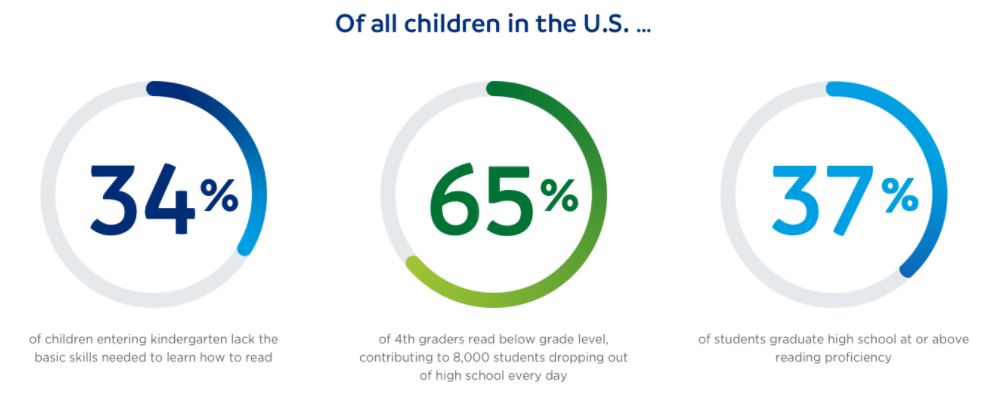The Pandemic Has Worsened the Reading Crisis in Schools
Dana Goldstein of the New York Times reported this week on the alarming “reading emergency” caused by the Covid pandemic and its severe impact on education in the United States.
Multiple studies are reporting that reading skills of younger students were at a 20-year low at the beginning of this school year. “Children in every demographic group have been affected, but Black and Hispanic children, as well as those from low-income families, those with disabilities and those who are not fluent in English have fallen the furthest behind.”
While it’s true that national tests have shown a stagnant or declining performance in reading for U.S. students since 2019, there is no denying that the pandemic has made all of this worse. Children spent months out of the classroom, and when they did return, they found less help than before the pandemic. A federal survey has shown that nearly half of all public schools have teaching vacancies, especially in special education and elementary grades.
Schools are now under pressure to boost literacy quickly to try to make up for the ground that has been lost. Billions in stimulus funds are going to schools for tutoring and other academic supports, but schools are still having trouble hiring quality staff.
Early on in the pandemic, research suggested that reading skills were holding steady while there was more concern about learning loss in math. Today the research is showing the opposite. Among the youngest students, many of whom spent their entire kindergarten year outside of school, the basics of reading have been lost.
As a result, some states like Mississippi, Alabama, and Massachusetts have begun retraining teachers in phonics. Individual and small-group tutoring is being funded by federal grants, however many educators are leaving the classroom for the more lucrative private reading and speech therapy industry. So even with the budget, schools are finding it difficult to hire experienced educators.
A new Stanford study finds that “reading fluency among second and third graders in the U.S. is roughly 30 percent behind what would be expected in a typical year.” While students are beginning to recoup the losses suffered when schools closed in 2020, it hasn’t been enough to make up for the gaps.
Many states paused academic assessment testing during the pandemic, so definitive numbers aren’t readily available but the evidence is compelling. Children who struggle with reading will be facing lifelong hurdles. What this means is that the critical time to address the problem is now, before more learning is lost.

Private tutoring can bridge the gap
When struggling students are paired with experienced, trained, certified educators in a one-on-one private tutoring arrangement, reading improvement can be dramatic. Due to the shortage of experienced teachers in the schools, and the fact that teachers in the classroom have to divide their attention among dozens of students, the concentrated attention that students need in order to catch up is best achieved with quality tutoring.

